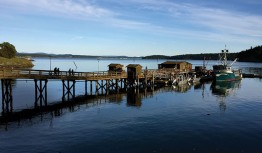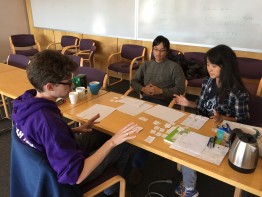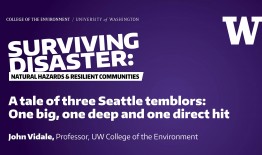This month, researchers from across the globe gain unprecedented access to data from the U.S. Regional Cabled Ocean Observatory.
Read more at The New York Times »Dating historic activity at Oso site shows recurring major landslides
The large, fast-moving mudslide that buried much of Oso, Washington in March 2014 was the deadliest landslide in U.S. history. Since then it’s been revealed that this area has experienced major slides before, but it’s not known how long ago they occurred. University of Washington geologists analyzed woody debris buried in earlier slides and used radiocarbon dating to map the history of activity at the site.
Read more at UW Today »The dream lab: UW's Friday Harbor Laboratories
Make no mistake, the sea is changing. Warming waters are causing some organisms to become more abundant, while undermining others’ ability to fight off disease. Invasive species, overfishing and mutated diseases are all signs and sources of changes to come. Increased acidity, whether from human activities like runoff and carbon emissions or from the upwelling of deeper waters, affects the ability of clams, oysters and fish to form shells and skeletons.
Read more in Columns »Combating global climate change is fun and games for EarthGamesUW
EarthGamesUW, a new group at the University of Washington, is inspiring kids to combat climate change through gaming.
Read more »Natural Hazards and Resilient Communities Lecture Video: UW's John Vidale
Unlike some natural disasters that we can depend on arriving at our doorstep every year—hurricanes, tornados, fires—earthquakes can be out of sight and out of mind because of their relative infrequency. But when the Big One strikes, it could be a real catastrophe for the Pacific Northwest coast, deeply disrupting the lives and economies throughout the region. John Vidale, professor of Earth and Space Sciences and chief seismologist for the State of Washington, wants people to be aware of the threats.
Read more »





